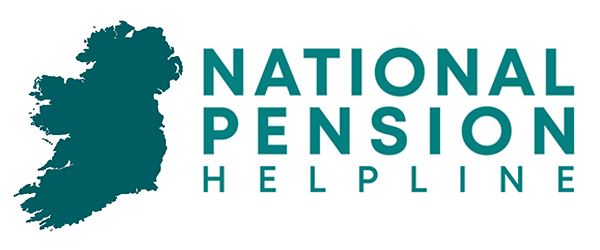Retirement should be something to look forward to. It’s when you can finally slow down, spend more time with family and friends, travel, or even relocate to a sunnier climate.
The perfect retirement is different for everyone – but what we all want is to be comfortable as we get older, and this means having a healthy pension pot.
But imagine that as you approach retirement age, you realise your pension isn’t what you had expected? Unfortunately, this is a reality for many people.
The difference between Ireland’s best and worst performing pension funds is staggering. What’s even more remarkable is that most people know little to nothing about how their pension fund is performing compared to other funds.
Your pension fund’s performance will decide the savings you will have in retirement, so we have examined over 600 pension funds in Ireland, looking at their performance over time based on the latest data.
Because pension performance is not fixed, we recommend scheduling a pension fund review every 3 to 5 years to weigh up your options.
Time to see what’s happening out there
It is in your interest to know how your pension fund is performing, and each funds’ performance can vary over time. Even the top performing funds differ depending on the period of time that you analyse.
Looking at performance over longer periods generally gives a more accurate picture than extremely short periods, i.e. 6 months. Analysing cumulative performance over 3 to 5 years is a good place to start when looking at funds from pension providers in Ireland.
Below you can compare some of the top funds based on the latest cumulative growth data.
Best performing pension funds in Ireland
So what is the best pension fund in Ireland?
The best pension fund in Ireland based on 3-year cumulative growth is New Ireland’s Euroland Equity fund. It is a clear winner in the overall growth stakes with an incredible 82.9% growth over 3 years, which rises to 118.2% if we look at the past 5 years.
New Ireland Euroland Equity fund, which was created in 2003, “aims to generate long term capital growth by investing in a portfolio of Euroland Equities”.
This fund has a ESMA risk rating of 6 out of 7, indicating high risk. This means that while the fund has the highest 3-year growth, it is not for everyone because of its risk exposure.
Why risk matters
You might now be thinking that choosing a pension fund is easy, that all you have to do is choose the fund with the highest growth over the past few years.
Although looking at performance is important (especially over longer timeframes), it’s not the be all and end all. In other words, there are other things that you must take into account – like risk and annual charges.
Each pension funds’ risk is rated on a scale from 1 to 7, making it easy to understand how volatile your pension fund is. As you get older, you will probably decide to ‘de-risk’ – that is, move your savings to a fund with a lower rating on this scale.
Pension funds with higher risk ratings are attractive to people in their 20s or 30s. This is because people in their 20s and 30s generally have decades before retirement, and can ride out the highs and lows in the market.
Those in this age category who are open to a degree of volatility tend to opt for higher risk funds, while these same funds are unlikely to be suitable for people in their 50s or 60s. This is because as you approach retirement, you will begin to prioritise capital preservation over growth.
Choosing a pension fund should not be based on growth alone and speaking to an expert is crucial.
Average pension fund performance
The vast majority of pension funds in Ireland have experienced positive growth over the past 3 years.
Of the 583 funds in our pension fund database where performance data is available, 501 had positive 3-year cumulative growth on 1 September 2025, while 78 had negative growth. Three funds recorded 0% growth over the period.
The 3-year growth of the funds that experienced positive growth ranges from 0.27% to 82.2%, while funds with negative growth were as low as -22..58%.
To compare the performance of pension funds in real time, check out our fund explorer here.
The worst performing pension funds
A number of property portfolios have seen negative cumulative 3-year growth. Nine of the 10 worst performers over the past 3-years are property portfolios, and over a third of the funds which recorded negative growth were also in the property category.
In fact, of 32 property portfolios, just 4 have seen positive 3-year growth. However, some property portfolios have seen enormous growth over longer periods.
For example, New Ireland’s Property fund, created in 1988, has seen growth of over 876% since its inception. Over the past 3 years it recorded negative growth of 12.6%.
However, the unwanted title of the worst performing fund over 3 years is the Standard Life Prosperity Property 6 G (-21.5%). However, since its inception in 2000, the fund achieved lifetime positive growth of more than 63%.
If we look at the worst performer overall since inception, that title goes to Aviva UK Property Fund Series C. Since 2006, the €42 million property portfolio recorded negative growth of 42%.
Remember that your pension fund performance determines the amount of pension savings you will have in retirement. Investing a percentage of your hard-earned salary to an under-performing pension fund could come back to bite you.
10 worst performing funds over 3 years
Why is there such a difference in pension fund performance?
What causes your pension fund to grow? How come some funds consistently return high growth figures while others scrape along at the bottom? There seems to be a presumption among Irish pension holders that all funds grow at the same rate.
Obviously, as the figures show, this is not so, and being in the wrong fund will cost you in your retirement.
Each pension fund is made up of different assets. Portfolios can be made up of equities in companies, government or corporate bonds, cash, property and more.
Some funds have 100% equities, with shares in a number of companies or sectors. Other funds have a smaller allocation to equities and a higher allocation of bonds, cash or property.
Funds with a higher percentage of equities tend to be higher risk, often rated 5 or even 6. These funds usually see the highest long-term growth. They may also see the highest short-term growth – however as they are more volatile they can also be unpredictable.
Short-term negative growth can be experienced with higher risk funds, which is why those in their 50s and 60s are usually encouraged to ‘de-risk’ to protect their savings.
We don’t have to look back too far in Ireland to see how disastrous it is to put all your eggs in one basket. You cannot keep hoping that one market or another will suddenly kick off, and your pension fund will go with it. Growth differences between funds will directly decide what you will enjoy in retirement, and you need to be on top of this, today.
Your rate of return makes a huge difference to your overall pension health
Someone once said that ‘it will be alright at the end of the day.’ Unfortunately, hoping that it will, and the reality can see two, very different outcomes. The money you trust is growing in your pension fund may be doing so but not at the rate you expect. Taking a look at the returns in the Irish pension fund market over a recent ten-year period can make sobering reading.
For Example: If you invested €100,000 from the beginning of 2012 to the end of 2021, you would hope to see a decent return. A fund of €206,501 with Friends First looks good, a little over the doubling of your money. The average return, though, was €260,763, a difference of over €54k, and a sizable amount if you were in the wrong pot.
When you look at the difference between the worst and best, Zurich Life at €327,249, you’ll see a disparity of over €120k. Now comes the time for head-scratching. Why is one fund doing so well and others just not performing? Even more importantly, you should be asking where is my money and why am I not seeing such gains?
What else is stopping your pension from being profitable?
An obvious answer here is what investments your fund manager is making with your pension money. Slow growth, after all, comes from poor investment planning. There are other factors which affect your fund’s profitability too – knowing what they are and addressing their impact can save you money.
Broker Management Charges
Broker Management charges and Investment Management charges vary from 0.5% to 1.5% annually. When dealing with figures in excess of €200,000, a small percentage can be a sizeable figure. If you factor in these charges on an annual basis, their impact on your fund’s profitability can be significant.
Remember too that they are payable, even if your fund is in the red.
What can you do?
Review, review, review and then review some more is the order of the day. We have a free pension review service available to the public which allows our experts to figure out how to make your pension grow faster.
Of course, you cannot judge a pension fund’s performance on a one or two-year tracking. You can, however, get a good idea when you have the data for five or even ten years. It is very advisable to sit down with your pension manager at least every five years and review the fund.
Ask an independent financial adviser to look at your fund and comparable ones in the market. Don’t be shy about charges and see where you can save money. If a better performing fund is within your risk range, then move your fund to the one with a better track.
It is too late to do this after you retire, so don’t hang about.
Don’t be scared to move provider
Often the fear of moving your pension fund is a lot worse than actually doing it. Legislation is on your side, and the time to do so is now, not in another five years when your fund is still underperforming. Getting the best advice means acting on it and taking control of your pension fund.
Moving to a better performing pension fund could be the difference between an ok retirement and a comfortable one. The returns from a top of the range, best performing fund and that of the average or worse are considerable. You could be missing out on €300,000 over a ten-year period.

